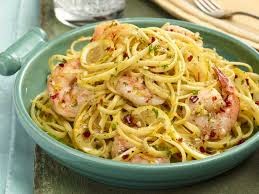“CONTEXT AND MEMORY PLAY POWERFUL ROLES IN ALL THE
TRULY GREAT MEALS IN ONE’S LIFE” - Anthony Bourdain.
I love the organic nature (no pun intended) of
Anthony Bourdain, along with his cookbooks and cooking shows. A former heroin
addict, Bourdain has a very rugged, rebellious image and is extremely laid back
which adds to this fun atmosphere of his shows. The vulgarity of his language,
his honesty and his undeniable appreciation for everything he gains on his
travels adds depth to his show “No Reservations”.

In “Food and Cultural Studies” critic John May
“points out that independent travel is therefore predicated on a quest for a
‘backstage encounter’ with ‘authentic people’ things and places” (164). This is
further agreed by Bourdain as he states research of a particular country for
the show, can be most difficult unless they have found “found a local contact
who lives in the area, who knows the show, has a sense of humour and understands
our approach”(GQ 2012). In this same way, critic John Urry has “agreed that
travel is dependent upon the cultivation of a ‘tourist gaze’ which contrasts
the unusual and sensual aspects of travel with those of everyday life” (33). It
is much more exciting to see the real
country, through a local who has a spontaneous yet educative outlook on their
country and willingness to share this.
This unpretentiousness is further mirrored in an
interview for the magazine “Ask Men”. Anthony Bourdain shows his respect for
the working class stating his job is a luxury not the right of a travel
writer/chef. He states,
“This? This is easy. Look,
my life is not hard in general. My regular job is to travel and shove food and
liquor in my face and go to all these fantastic places. Working a bread shift
is a lot
harder. I know what real work is and you know what? This isn't it” (2015).
Obviously chefs are normal people, and as stated above Anthony has definitely worked his fair share of 'normal jobs.' And this lead me to question two things that always intrigued me about chefs:
- What
do they cook at home and what are their family’s reactions or roles e.g. if the
husband is the ‘cook’ at home – does the wife cook too? Or can his children
cook?
- What’s
their views on other chefs, how do they feel about what other chefs cook?
To answer the first, being that Bourdain was a chef
before No Reservations, he obviously
knows how to prepare a wide selection of meals. And I love his quote from “Men’s
Journal” as he states,
“In an ideal society,
over 12 should be able to cook a few basic things reasonably well. They should
be able to feed themselves and a few friends, if called to do so, both as a kindness,
and as a basic life skill”.
I definitely agree with this and the fact that he
mentions cooking for friends, which again goes back to the social element of
food and cooking, the sharing and love around a table with family and friends.
This
made me think, food is memory and while you can never relive a physical memory,
you can do so through food. This is reiterated by many TV chefs, as there
always seems to be a yearning for the past and wanting to recreate your
favourite dishes. It’s the idea of wanting to create your own beautiful
memories and have that treasured later in life.
To answer the second, being that Bourdain is the rebellious
and outspoken personality, he does not hold back! This could be seen in a GQ
interview where he states,
“The cooking
profession, while it’s a noble craft and a noble calling, cause you’re doing
something useful – you’re feeding people, you’re nurturing, you’re providing sustenance
it was never pure. Vatel was a hustler. Careme was a hustler. Escoffier was a
hustler”.
Pause. Was that sacrilege? The great 19th
century French chef Georges Escoffier - scrutinised? I’d have to say I agree, I
absolutely love Anthony Bourdain and his magnificent approach to food, cooking
and travel! Along the way, many chefs lose the most important aspects of food –
the taste and feeling. It quickly became something about ridiculous decadence,
the aesthetics and aristocracy.
Much like Nigella, Bourdain seems to be a genuine person and
chef (coincidence that they both starred on The Taste? I think not!).
Bourdain’s willingness, enthusiasm and modesty are just some of the reasons why
he is so admirable and popular amongst the general public. For one thing, he doesn't just travel to the mainstream islands and eat in polished, formal restaurants like other chefs do.
Instead, he travels to astonishing places such as his favourite - Southeast
Asia. He shows his appreciation stating, “the food, the culture, landscape and
smell: they’re all inseparable.”











